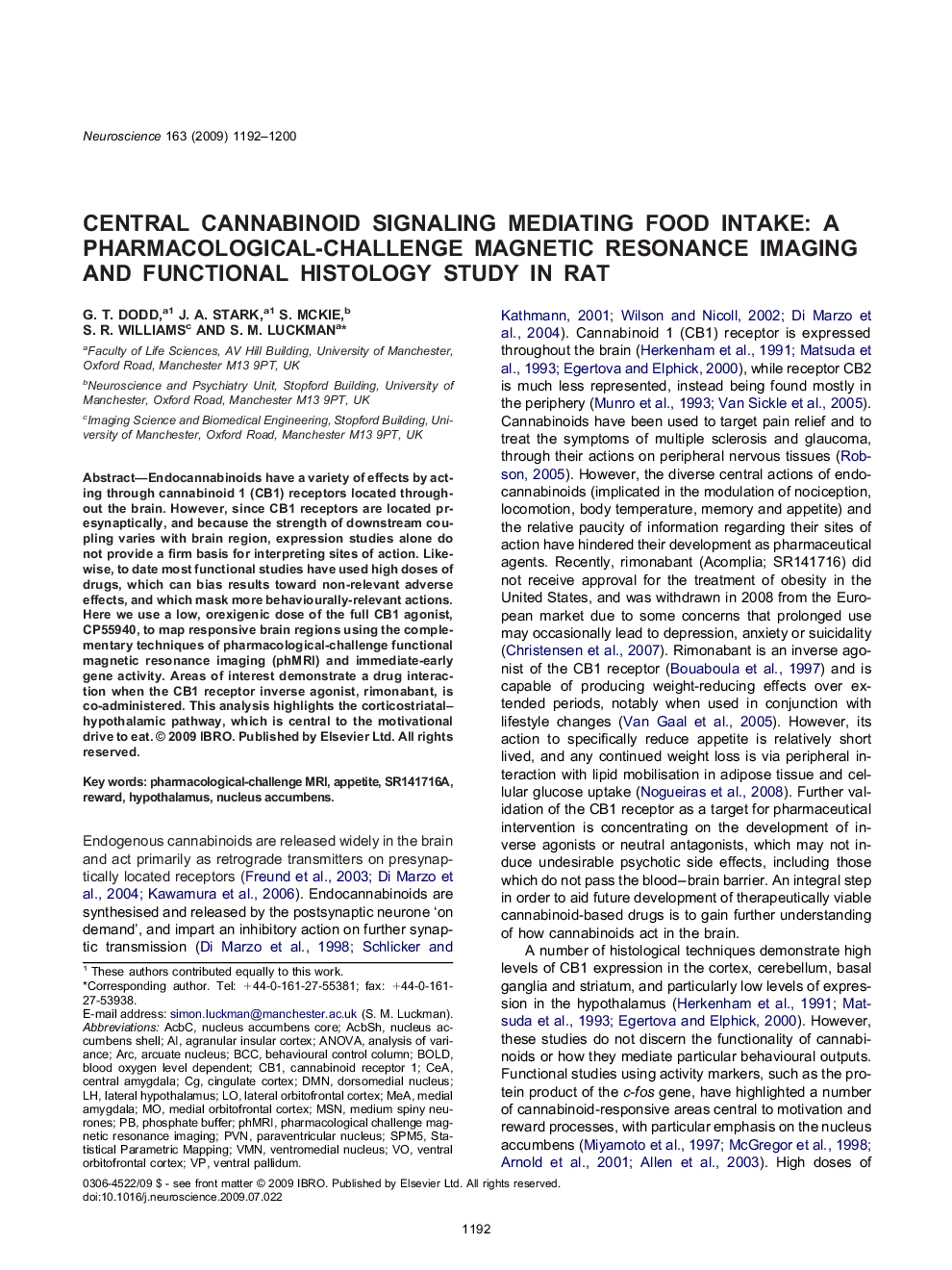| Article ID | Journal | Published Year | Pages | File Type |
|---|---|---|---|---|
| 6277704 | Neuroscience | 2009 | 9 Pages |
Abstract
Endocannabinoids have a variety of effects by acting through cannabinoid 1 (CB1) receptors located throughout the brain. However, since CB1 receptors are located presynaptically, and because the strength of downstream coupling varies with brain region, expression studies alone do not provide a firm basis for interpreting sites of action. Likewise, to date most functional studies have used high doses of drugs, which can bias results toward non-relevant adverse effects, and which mask more behaviourally-relevant actions. Here we use a low, orexigenic dose of the full CB1 agonist, CP55940, to map responsive brain regions using the complementary techniques of pharmacological-challenge functional magnetic resonance imaging (phMRI) and immediate-early gene activity. Areas of interest demonstrate a drug interaction when the CB1 receptor inverse agonist, rimonabant, is co-administered. This analysis highlights the corticostriatal-hypothalamic pathway, which is central to the motivational drive to eat.
Keywords
SR141716AMEAVMNAcbShSPM5BCCBOLDphMRIMSNCB1DMNACBCCeAVentral pallidummedial amygdalaCentral amygdalaAppetitephosphate bufferanalysis of varianceANOVAblood oxygen level dependentlateral orbitofrontal cortexmedial orbitofrontal cortexAgranular insular cortexArcPVNStatistical Parametric MappingNucleus accumbensnucleus accumbens corenucleus accumbens shelldorsomedial nucleusVentromedial nucleusarcuate nucleusparaventricular nucleusHypothalamuslateral hypothalamusRewardcingulate cortexCannabinoid receptor 1
Related Topics
Life Sciences
Neuroscience
Neuroscience (General)
Authors
G.T. Dodd, J.A. Stark, S. Mckie, S.R. Williams, S.M. Luckman,
